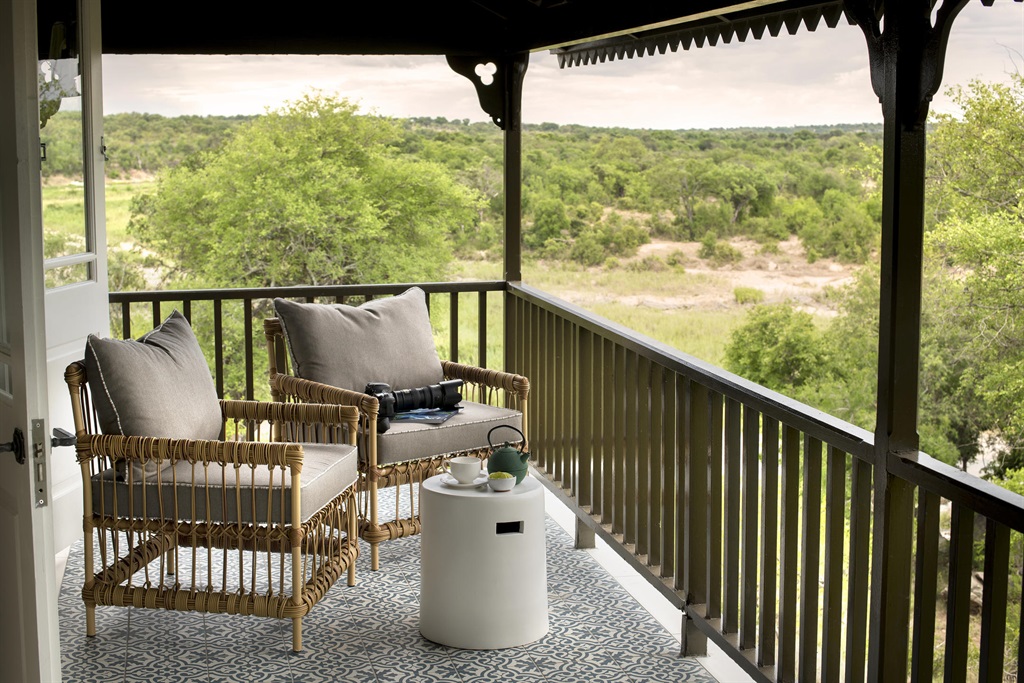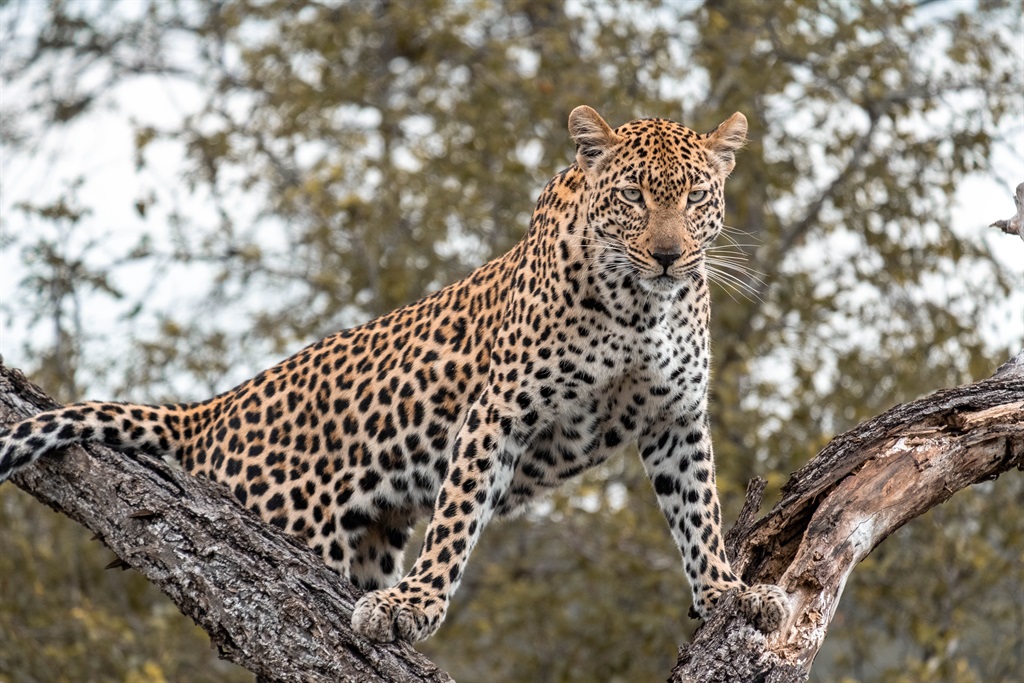
Review
- Kirkman's Kamp was a cattle ranch and hunting camp on the border of Kruger National Park.
- It's now a quaint, tranquil lodge just minutes from Skukuza airport.
- But it offers diverse scenery and unparalleled private wildlife viewing opportunities not afforded by the national park across the Sabie River.
- And thanks to the abundant leopard population in the region, it's also an essential participant in a global wild cat study in the Sabi Sand Nature Reserve.
- For more stories, go to www.BusinessInsider.co.za.
Perched on an idyllic grassy hill high above the iconic Sand River is Kirkman's Kamp, a luxury private lodge that offers access to some of the world's best leopard sightings, and accommodation in a quaint historical setting.
It's not cheap by South African standards. But it comes at an entry price that's more palatable than other new, lavish lodges in the Sabi Sand region. And it also has more of a history – albeit complex – than many safari camps in South Africa.
It began life as a cattle ranch where hunting was acceptable
Kirkman's Kamp began as a cattle ranch owned by the Transvaal Consolidated Land and Exploration Company, or TCL, in the 1920s. Like others in the region, it was surrounded by the mixed-used, predator-rich Sabi Game Reserve.
Although some emphasis was on protecting the wildlife in the reserve, farm managers - like Harry Kirkman, after whom the lodge is named - were free to shoot in defence of their livestock.
Kirkman was the ranch manager in the 1920s, but in 1927 he started taking on more duties relating to predator control, fire management and anti-poaching. He soon shifted focus towards wildlife conservation, was one of the founding members of the Sabi Sand Nature Reserve, and became a legendary ranger written into the folklore of the Kruger National Park and Sabi Sand Nature Reserve.
The move also earned Kirkman the honour of having a luxury camp named after him - and a flattering portrait perched above its fireplace.
Present day Kirkman's is a little different
Today, set in lush natural vegetation alongside the Sand River, there's little to indicate that Kirkman's Kamp was once a more destructive base, aside from the commitment to its colonial-era history and jarring animal trophies retained in the main guest area.
Despite the hark back to the camp's history (there's a tennis court opened by Billie Jean King, a homely pub, and original antiques dotted throughout the general guest areas) it doesn't feel dated.
Lodge operator andBeyond recently initiated a light makeover that's brought parts of the communal areas, and much of the guest suites, into a more modern safari era.
As the crow flies, Kirkman's is six kilometres from the Kruger National Park's bustling Skukuza campsite and its conveniently located airport.
Yet sitting on the elevated cottage patio or lounging around the pool, the maximum of 25 guests would never know that Kruger's biggest camp, which at capacity sleeps 1,000 people, is practically just over the hill.
Leopards and other wildlife
Although the tranquillity of a poolside-GnT may appeal to some, most come here for the wildlife. This section of the Sabi Sand Nature Reserve benefits from the same wildlife-rich terrain as Skukuza - but with none of the jostling for position and the need to remain on limited tar roads.
The camp's exclusive traversing rights on 10,500 hectares, with the option to off-road, serve up unparalleled sightings of leopard, regular sightings of lion and elephant, and chance encounters with wild dog and rhino.
The solitude and exclusivity afforded at these sightings, the scenic beauty of the snaking Sand River, and a more reasonable price point than other high-end lodges have earned Kirkman's a reputation as one of the best in the Sabi Sand Nature Reserve.
Central to Kirkman's appeal is its access to leopards, several of which have territories overlapping the camp and its traversing areas. It's not uncommon to hear a leopard's guttural cough from behind one of the giant boulders metres below the rooms. And, at times, see them stroll casually across the manicured lawns.
But most of the sightings are virtue of the camp's skilled trackers, and a carefully choreographed system that cycles guests through the best sightings with limited vehicles at each.
A morning with leopards
"We've just had a sighting of Tengile and two," the Land Cruiser radio crackled to life shortly before 11AM. Guide Nicholas Coleman had just pulled up alongside the lodge at the end of a successful morning's game drive and scenic bush breakfast. "Any takers are welcome to join. Over."
It was a radio call that may have had many guides reaching for the volume control in the hope guests hadn't overheard or understood, but Coleman had other plans.
"I know it's late," he said, turning to address the guests in the back of his vehicle. "But who's keen for another leopard sighting? She's with two little cubs."
Despite the impending midday heat and an already long morning drive, the guests needed no persuasion. Coleman wrestled the 4x4 back into gear and issued a weak apology to the staff who'd customarily gathered to greet us on return to camp.
"We'll be back in a few," he said with a broad grin, reaching for his radio to confirm our attendance.
The resulting sighting of the resident leopard named after Kirkman's sister camp Tengile River Lodge - and her two young cubs - lasted well over an hour. Given the time of day, it was mostly a one-vehicle sighting. Coleman quietly trailed the three predators as they marched, played, misbehaved, and napped, mostly obvious to their human onlookers.
It was an experience worthy of a National Geographic documentary, or the kind researchers in years gone by may have drooled over. But at Kirkman's Kamp, it was perhaps only slightly more than a regular Tuesday.
For this reason, the global wild cat research project Panthera considers the Sabi Sand its flagship destination for leopard research.
"Leopards are so prolific in this area, and given that they are so well habituated and are being seen on a regular basis, this makes them the perfect control population on which to base a leopard study," says Matthew Smith, assistant head ranger for Kirkman's Kamp.
"These leopards are arguably the most well-documented and well-researched density of leopards in the world."
A flagship leopard research site
Nineteen lodges in the reserve work together to record and document the animals. Given their ubiquity, stability, and relative protection, researchers see the leopard population as a control group that can influence conservation initiatives and governmental policies elsewhere.
The numbers revealed by Panthera research are also staggering.
There are about 12 leopards in every 100 square kilometres of the reserve, which places several within the traversing area of a lodge like Kirkman's Kamp. And previously, guides have reported more than 1,200 unique leopard sightings – in a single month.
This means despite the leopards' notorious elusiveness and alarming population decline, most of the Sabi Sand's skilled trackers make light work of spotting them for wide-eyed guests. And although participation in the study will aid in their conservation, the resulting facts and figures are also a powerful marketing tool for the reserve's lodges.
Incredibly, as with nearby Skukuza, it's not just about leopards in this dense corner of the Sabi Sand.
Elephants, lions, rhinos, wild dogs, and rich birdlife appeared over a two-night stay. And a chance sighting of a highly endangered pangolin, in broad daylight, had most guides immediately requesting access to the sighting.
Although it's easy to live in the moment while sitting in the shade of a Kirkman's Kamp marula tree, likely sipping something cold and expensive while wondering what to order for lunch, its historical reminders - both positive and negative - are worth considering, and add some substance to a stay there.
How, just 100 years prior, ranching may have thinned much of the surrounding verdant bush. A colonial presence may have been celebrated rather than justifiably critiqued. And leopards, previously used to skulking away from the rifle barrels of protective farmers, are now more populous here than in many places on earth - and entirely unfussed when wide-eyed guests choose to spend several hours trailing quietly behind them.
Staying at Kirkman's Kamp
Kirkman's Kamp is located in the Sabi Sand Nature Reserve. It's possible to reach the camp by road or air. If arriving by air, the nearest airport is Skukuza Airport. Skukuza Airport fields commercial flights from Airlink, as well as charter airlines. Alternatively, it's a five-huor drive from Johannesburg.
Accommodation at Kirkman's Kamp is in the form of two-person cottages, with the option of a triple bedroom for families. It's possible to combine a trip to the lodge with nearby sister lodge Tengile River Lodge, or via an air connection to Ngala.
Andrew Thompson was a guest of Kirkman's Kamp.


